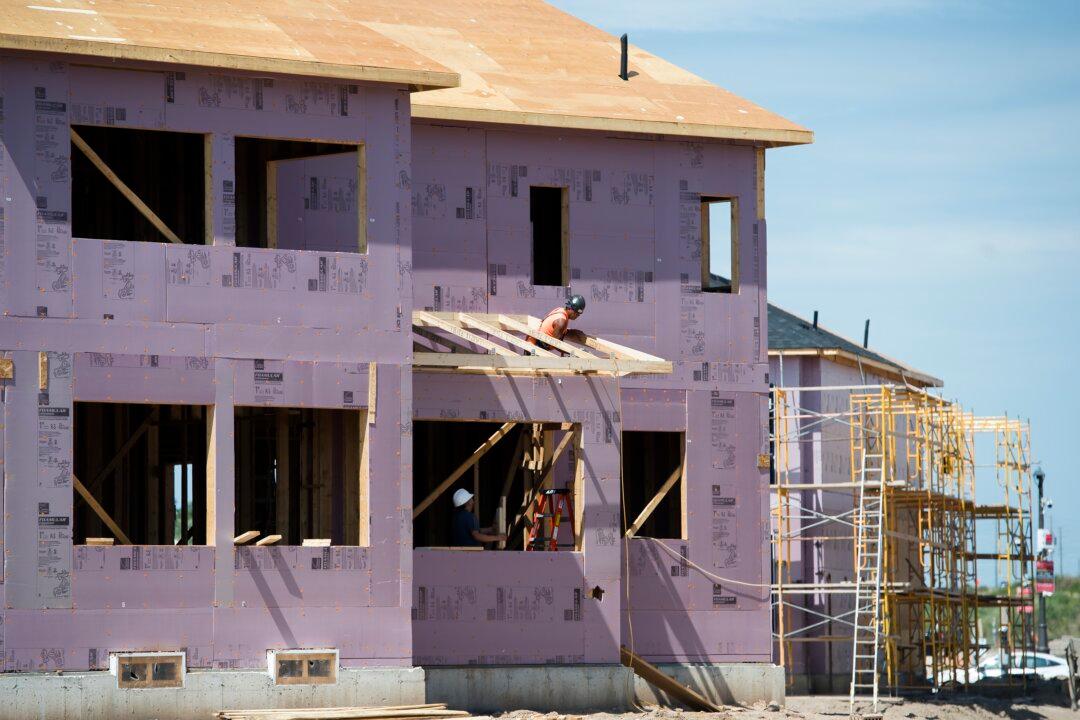Housing affordability in Canada is as bad as it’s been in over 30 years despite being a longstanding priority for Ottawa. It’s a conundrum, as new homes need to be built faster to meet soaring demand, which some pundits say policy-makers now appear reluctant to cool.
Compounding the problem is how much the economy currently depends on an elevated level of investment in building new homes.
RBC senior economist Robert Hogue reported on Dec. 20 that housing affordability—broadly measured by home ownership costs as a proportion of household income—is at its worst level in 31 years due to rapidly rising prices and higher mortgage rates.
“The need for more supply has never been greater. This became clearly evident in the past year with bidding wars springing up in places that have rarely or never seen them before, and intensifying in places more accustomed to them,” Hogue said.
The Canadian Real Estate Association (CREA) reported on Dec. 15 that the MLS Home Price Index climbed a record 25.3 percent year-over-year for November, and that the months of housing inventory on the market was just 1.8—matching a record low from March. The long-term average of this figure is over five months.
Industry experts have said that, short of higher interest rates, the mortgage stress test is the best tool for cooling housing demand. But with signs pointing to more overheating, the Office of the Superintendent of Financial Institutions (OSFI) and the feds on Dec. 17 kept the threshold level of 5.25 percent unchanged for the mortgage stress test. To qualify for a new mortgage a borrower must be able to afford a mortgage at a rate that is the greater of 5.25 percent or the offered mortgage rate plus 2 percent.
“It’s interesting that OSFI did nothing,” said mortgage expert Rob McLister in a Dec. 17 interview with BNN Bloomberg. “I think everyone can agree that home prices are a runaway freight train.”
He suggested that, while policy-makers don’t want to be seen as making it harder to get a mortgage, some observers would argue that a financial regulator trying to reduce risk could have raised the 5.25 percent threshold.
Meanwhile, when presenting the government’s economic and fiscal update on Dec. 14, Deputy Prime Minister and Finance Minister Chrystia Freeland said that “housing affordability remains a priority for our government and we will take further action in the upcoming budget.”
Economy Vulnerable to Housing Investment
With investment in residential housing construction now exceeding 9 percent of gross domestic product (GDP), David Doyle, head of economics at Macquarie Group, warned that this elevated level is a “significant structural imbalance” in the economy.
In an interview with BNN Bloomberg on Dec. 17, Doyle said that during prior recessions, falling residential investment has been responsible for somewhere between 50 and 60 percent of the decline in GDP growth.
“When it’s so elevated, it opens up the possibility that when you reach that next recession that you see a steep and sharp decline and it makes the recession more severe,” he said.
Doyle added that this pace of residential investment is unsustainable.
Housing investment actually declined in the third quarter, and Statistics Canada reported on Nov. 30 that the 5.2 percent drop in new construction was the biggest since the second quarter of 2009.
But even with the decline, more supply is coming online. The Canada Mortgage and Housing Corp. (CMHC) reported on Dec. 15 that in November, the annual rate of housing starts across Canada surged to over 301,000 units when adjusted to remove seasonal impacts, which is almost a record.
“Since the third quarter of 2020, housing investment has emerged as the predominant contributor to economic activities,” according to Statistics Canada on Aug. 31. It added that the average housing investment over the past four quarters was 17 percent higher than the average over the last five years.





